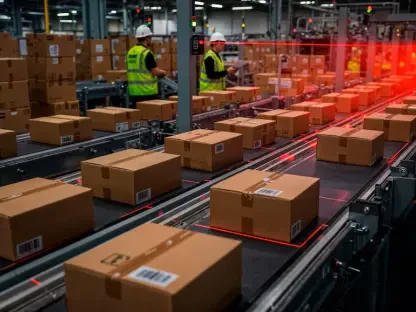The global trend of declining letter volumes has reached Australia, prompting major adaptations in the operations of AusPost. This significant decrease in letter deliveries poses challenges for traditional postal services, necessitating strategic reforms. Australians now receive an average of just two letters per week, with most being corporate mail. Such changes reflect broader shifts in communication habits and demand adjustments in AusPost’s business model to sustain its viability.
Shifts in Mail Delivery Patterns
Declining Frequency of Letter Deliveries
As the number of letters delivered continues to decrease, AusPost is adjusting its delivery frequency to reflect current demands. CEO Paul Graham has indicated a move toward subsequent-day and third-day deliveries. This modification is intended to enhance efficiency while adapting to reduced letter volumes. The decline is not unique to Australia but mirrors global trends where digital communication has largely supplanted traditional letters. The decreasing frequency of letter deliveries is both a symptom and a consequence of the digital age.
For many Australians, receiving letters has become a rarity, mostly limited to official correspondence or occasional personal notes. This shift has significant implications for AusPost, pushing the organization to rethink its logistics and operational strategies. With the letter delivery business proving unprofitable, changes in delivery patterns are essential to maintain operational viability. Even with a recent increase in the basic postal rate to $1.50, the letter delivery sector contributed an $83.7 million loss in the first half of the year. As a response, AusPost is focusing on optimizing its resources and exploring profitable avenues.
The Impact on Corporate Mail
Corporate mail constitutes the bulk of the remaining letter volumes, but even this segment is shrinking. Businesses are increasingly embracing digital communication methods, further diminishing the demand for traditional postal services. AusPost’s profitability has been heavily reliant on the parcels and services sector, which generated over $4 billion of its $5 billion revenue in the first half of the year. However, the discordance between profitable parcels and unprofitable letters underscores the urgent need for operational restructuring.
Given the decline in corporate mail, AusPost faces the challenge of aligning its resources with changing market demands. The shift away from physical mail requires significant adaptation, including investment in technology and infrastructural overhauls. The increasing cost of maintaining traditional postal routes for minimal letter volumes adds pressure on the organization to find innovative solutions. As businesses continue to adopt paperless practices, AusPost’s focus on diversifying its portfolio through parcel delivery is not just strategic but necessary.
Rise of Online Shopping and Parcel Demand
The Boom in Parcel Deliveries
The demand for parcel deliveries has surged, driven by the rise in online shopping, especially during the COVID-19 pandemic. With consumers increasingly seeking online shopping deals due to cost-of-living pressures, AusPost experienced record parcel deliveries. In 2024 alone, the service delivered an unprecedented 102.8 million packages, underscoring a dramatic shift in consumer behavior. This boom has offered a lucrative revenue stream, significantly boosting AusPost’s profitability.
Adjusting to the growing parcel demand, AusPost has had to expand its infrastructure and invest in new facilities tailored to package handling. An investment of $185 million into new parcel-focused facilities reflects the organization’s commitment to adapting to market trends. This not only improves operational efficiency but also enhances customer satisfaction. Expanding parcel locker services and establishing package-only outlets are part of AusPost’s strategy to stay competitive in a burgeoning market. Additionally, these developments aim to streamline parcel deliveries, making them more accessible and convenient for consumers.
Competitive Pressures in the Parcel Market
Despite the growth potential in the parcel delivery sector, AusPost faces escalating competition. Global platform players and gig economy operators are aggressively vying for market share, challenging AusPost’s traditional dominance. The competitive landscape compels AusPost to continuously innovate and improve its services. With a robust logistic network and established brand presence, the organization still holds a significant advantage, but complacency is not an option.
Maintaining a competitive edge requires substantial investments in technology, customer service, and market expansion. Collaboration with stakeholders—including communities, customers, and government bodies—is critical for navigating these challenges. CEO Paul Graham emphasizes the importance of sustainable reforms and modernization to align with evolving consumer expectations. Strategic initiatives such as the Post26 plan aim to balance the letter-to-parcel shift and ensure ongoing relevance. The commitment to securing long-term sustainability amidst declining traditional revenue streams and rising competition is central to AusPost’s future endeavors.
Strategic Reforms and Future Considerations
Investment in Technology and Infrastructure
To address the dual challenge of declining letter volumes and rising parcel demand, AusPost has embarked on a series of strategic reforms. One of the key areas of focus is the investment in technology and infrastructure to streamline operations. The modernization of postal services includes upgrading sorting facilities, implementing advanced tracking systems, and enhancing delivery efficiency. These technological advancements are crucial for maintaining competitiveness in a rapidly evolving market.
By leveraging technology, AusPost aims to provide a seamless and efficient customer experience. Automated sorting systems and real-time tracking capabilities not only improve operational efficiency but also enhance transparency. Customers can now track their packages with precision, leading to increased satisfaction and trust. Additionally, investment in eco-friendly delivery solutions, such as electric delivery vehicles, underscores AusPost’s commitment to sustainability. These initiatives reflect a forward-thinking approach to evolving market dynamics and environmental considerations.
Collaboration and Stakeholder Engagement
The global trend of decreasing letter volumes has now impacted Australia, leading to substantial changes in AusPost’s operations. This notable drop in letter deliveries creates challenges for traditional postal services, making strategic reforms imperative. On average, Australians now receive only about two letters per week, with most being corporate or business-related. These alterations mirror wider shifts in communication methods, driven largely by digital advancements. As people increasingly turn to email, social media, and other electronic mediums for communication, the demand for traditional mail services continues to dwindle. Therefore, to maintain viability, AusPost must adapt its business model accordingly. This may involve expanding parcel delivery services, promoting digital solutions, or exploring new revenue streams. Ultimately, these changes underscore the necessity for postal services to innovate and stay relevant in an increasingly digital world.








